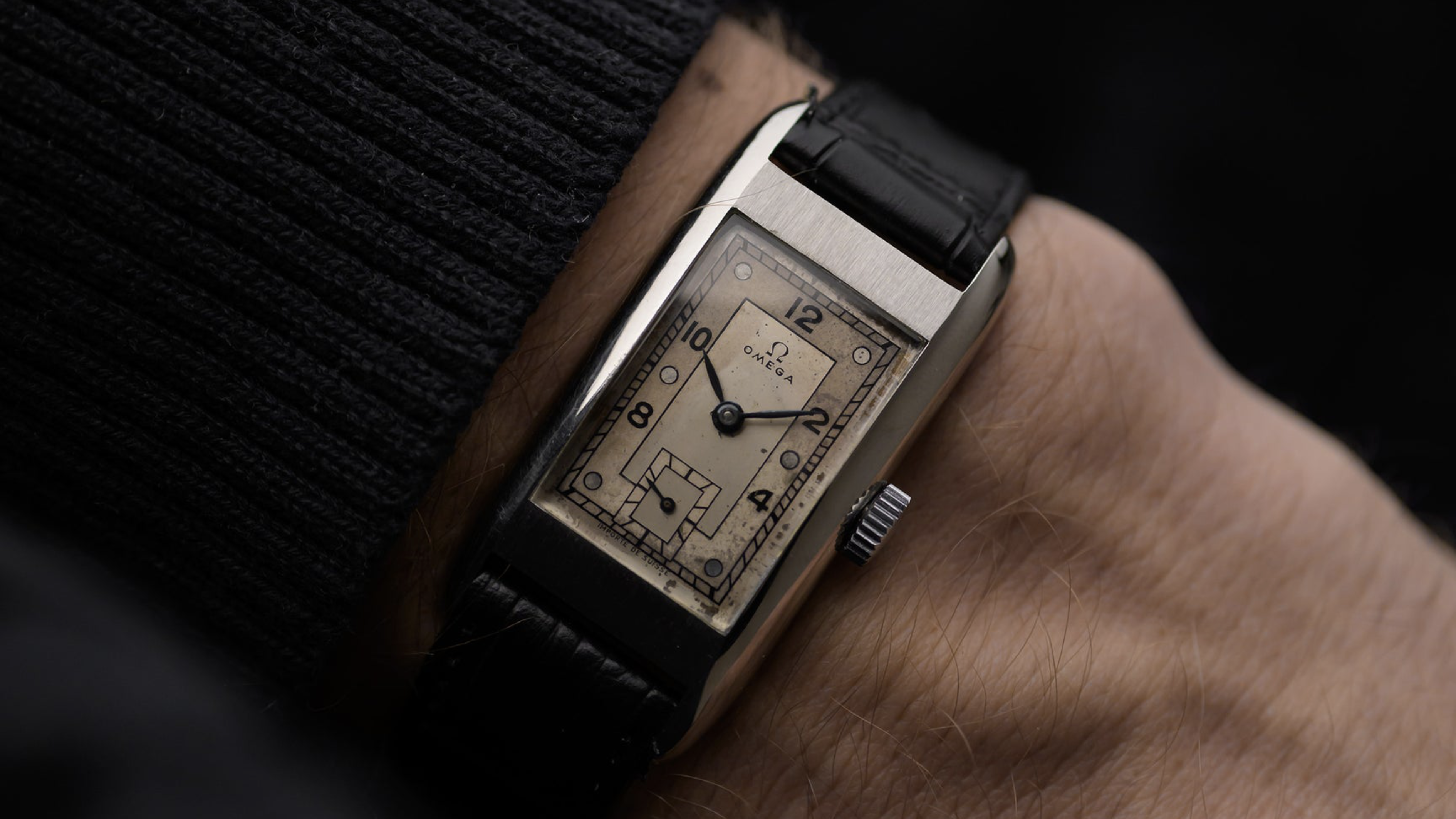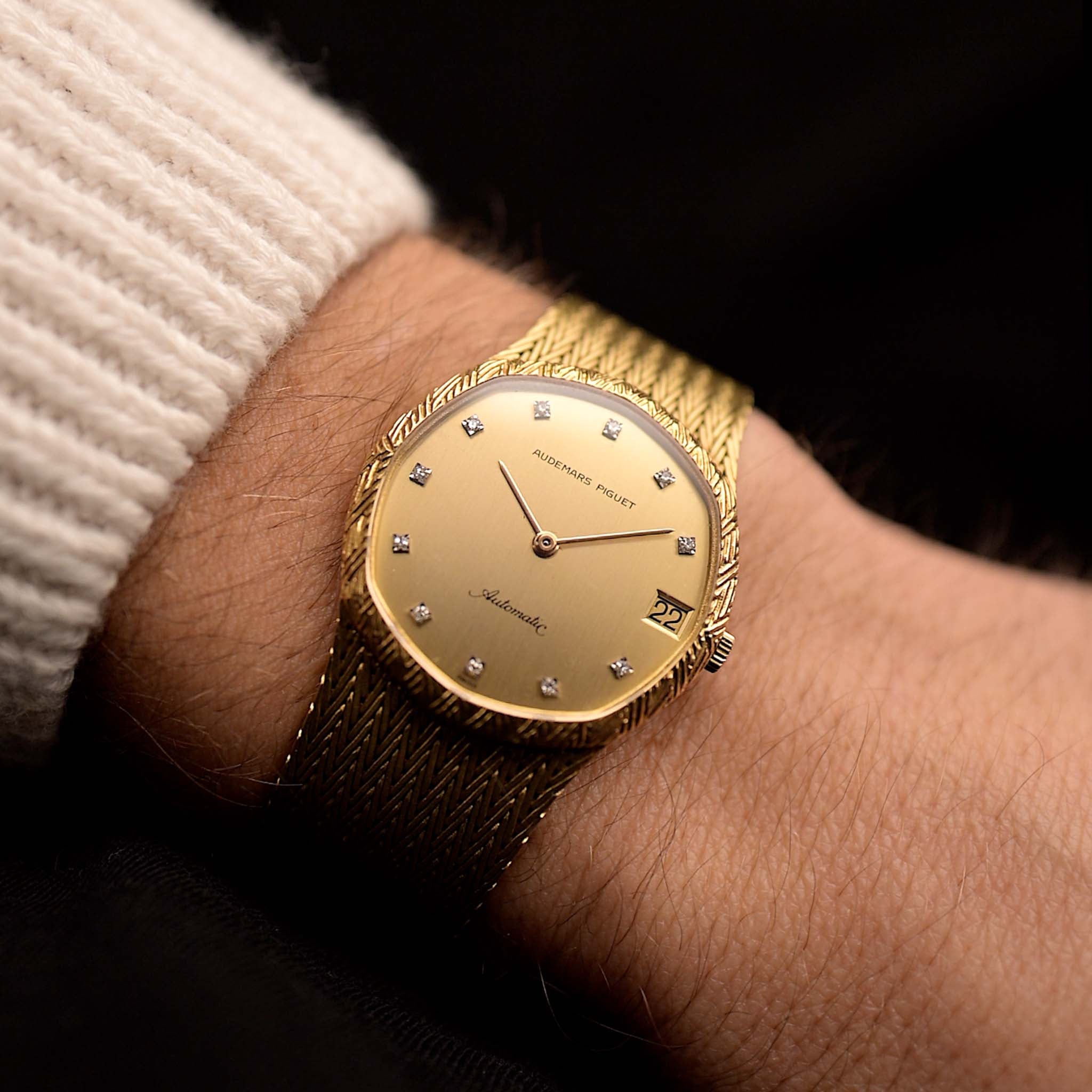Haptics matter as much as aesthetics to me. Sooo have you ever worn a Polyplan? Or a Cintree, a Curvex? The ergonomics are an increasingly important factor in our watch world. It's still an underappreciated virtue but those curvy little rectangles will absolutely make you smile the moment you put them on your wrist. These are amazing pieces, conversation starters and stem from an era of watch design that oozes character.
April 30, 2024
About Those Curves - The Quest for Comfortable Watches

Marcus Siems @siemswatches
Collector, Author, Data Analyst
I'm at an age now that I start to care about comfort. Ten years ago clothes and shoes and all that stuff only had to look good ... by now a little bit of haptics, wearability and ergonomics go a long way with me. Call it experience, call it dad vibes but it's definitely a trait that I deem desirable more and more.
The same holds for watches... of course. You might think of strap choices and bracelets but that's not where I'm aiming at. Imagine the case itself is constructed and envisioned to gently nestle to your wrist...
 A 1940s rectangular Omega that perfectly embraces the wrist. Photo Goldammer Shop.
A 1940s rectangular Omega that perfectly embraces the wrist. Photo Goldammer Shop.
1) The Curviplan
By modern standards we might think of maybe of a Cartier Tank Cintree. And rightfully so: The Cintree design originates over 100 years back in 1921[1-2] but it actually wasn't the very first one. Already in 1912 a (now unfortunately obsolete) company by the name of Movado registered a patent for a curved movement - the Polyplan[3]. Arranged in three levels, the upper and lower part of the movement are angled for perfect ergonomics in banana-shaped watches.
 The Movado Polyplan, a movement arranged on three levels to perfectly grace to the wrist. The patent (left), the movement (middle), and the assembled watch (right). Photos Courtesy of Italian Watch Spotter, & Antiquorum.
The Movado Polyplan, a movement arranged on three levels to perfectly grace to the wrist. The patent (left), the movement (middle), and the assembled watch (right). Photos Courtesy of Italian Watch Spotter, & Antiquorum.
The curved Movados were high-end timepieces from the brand. Produced between 1912 and 1940 the Polyplan came only in precious metals - 14k, 18k and Sterling silver[4]. The cases were made by renowned Genevan case makers as for example the Wenger manufacture (hallmark key #1)*.
And as intricate and exclusive as these timepieces have been they are rare as well... According to research overall production of the Polyplan Cal. 400 did not exceed 1,500 but was potentially even lower at around 1,100. In other words, that is around 50 pieces annually(!) over a total of 6 distinct references[5].
2) The Flair - Different Models
And Movado was only the beginning. Several other brands picked up on the "Ergonomics" trend. Rectangular watches per se have been very en Vogue in the early days of wristwatches... they only became a little longer.
 Handling the rectangular and curvy 1940s style icon from Omega. Video Goldammer Shop.
Handling the rectangular and curvy 1940s style icon from Omega. Video Goldammer Shop.
The aforementioned Tank Cintree from Cartier was one phenomenon of the time; launched in 1921 it was one of the first curved classics. Patek Philippe has been among the first as well with curved "Gondolo" style watches selling as early as at least 1919 (the refs. 10 and 11). Further brands like Omega, Gruen and others followed put and made this style one of the most successful ones of the late Artdeco period.
 The case back on the curved rectangular Omega from the 1940s. You can easily see how the shape will influence the wrist presence. Video Goldammer Shop.
The case back on the curved rectangular Omega from the 1940s. You can easily see how the shape will influence the wrist presence. Video Goldammer Shop.
Importantly, not all of these pieces came with curved movements but featured rectangular calibers. Which may sound like a small detail becomes quite vital in the next section.
3) The Chronograph Approach
Chronograph movements were traditionally round. Fitting these into long and elongated case designs wasn't exactly applicable without increasing the dimensions dramatically. Nevertheless, in the late 1930s (potentially 1937) a range of different chronograph case shapes started to appear featuring long flexible lug constructions. And these started to be everywhere... From Rolex's "Non-Oyster" series, to Omega, Longines, Tissot, Doxa, Gallet, Tavannes, Hermes (Jaeger)... and the list goes on. Everybody was using this new style to accommodate the customers wish for comfort and the undisturbed tactile watch experience.
 The watch that (back then) sent me down the rabbit hole of crazy lug-shaped Rolex from the 1930s. Photo a ref. 2918 Courtesy of Phillips Geneva.
The watch that (back then) sent me down the rabbit hole of crazy lug-shaped Rolex from the 1930s. Photo a ref. 2918 Courtesy of Phillips Geneva.
4) Conclusion
This, my dear readers, has been quite a visually pleasing yet not a tremendously long-lasting trend of the late Artdeco period. I see three main reasons these wrist-hugging sculptures didn't survive a the fashionable shifts of time. First, the movements built into these time-only watches were relatively simple and shaped. This is not really an ideal architecture for every purpose of a watch. Second, rectangular watches in general got out of fashion during the late 1940s. There are examples of elongated and curvy oval timepieces (Cartier Baignoire Allongée from 1957) but that's still more exception than rule.
And lastly, the appeal of watches shifted towards more sturdy tool-watches during the 1950s. And if you're wearing a watch at your job, working hard and under tough conditions... the warm embrace of a curvy golden spectacle of a timepiece isn't necessarily what you're looking for.
 wrist-rolling a 1940s rectangular Omega with two-tone silver dial. Video Goldammer Shop.
wrist-rolling a 1940s rectangular Omega with two-tone silver dial. Video Goldammer Shop.
Gladly, the rationale for buying a watch has changed in our modern days again. They aren't tools anymore and the haptics, aesthetics and ergonomics are an increasingly pivotal factor. Maybe that's my older self speaking again but the convenience of a perfectly ergonomic watch case make wearing these pieces so much more fun! It's still an underappreciated virtue but those curvy little rectangles will absolutely make you smile the moment you put them on your wrist. On top, they are conversation starters and stem from an era of watch design that oozes character. Even though Artdeco in watches isn't that big at the moment you can definitely count me in!
* Another manufacturer exists but is hard to identify. Nevertheless the number is in the 10s of numbered hallmarks which can be assumed to be another manufacturer with headquarters in Geneva.
References
[1] The Cartier Tank Cintree - A Complete Guide; Wei Koh, Revolution Watches [Link]
[2] 100 Years of the Cartier Tank Cintree; Russell Sheldrake, A Collected Man [Link]
[3] "Always In Motion" - The Story of the Movado Brand; Alessandro Metelli, Italian Watch Spotter [Link]
[4] Polyplan Curved Wristwatch in White Gold; Monaco Legend Group [Link]
[5] The Legendary Movado Polyplan - Who has one?; Mark Amsterdam, OmegaForums [Link]
All rights on text and graphics reserved to the Author.




























Leave a comment